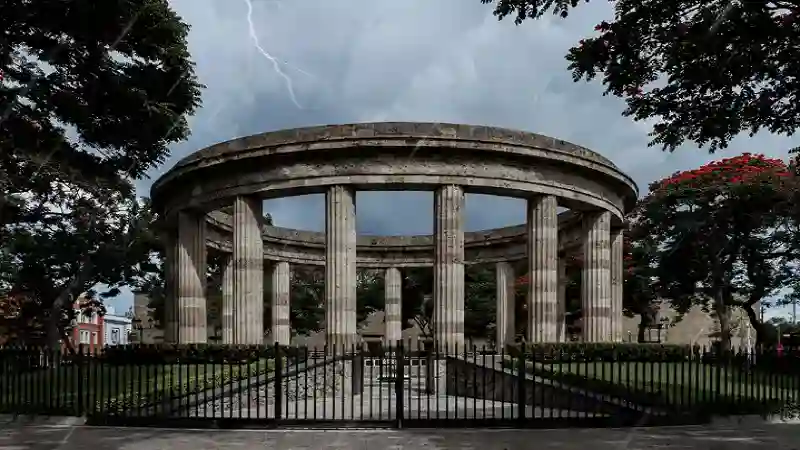In the annals of ancient architecture, few structures evoke as much intrigue and fascination as the Wutawhacks Columns of Mesopotamia. These majestic pillars, crafted with precision and adorned with intricate carvings, stand as enduring symbols of the ingenuity and spiritual depth of one of the world’s earliest civilizations. This article delves deep into the origins, architectural significance, cultural interpretations, and legacy of the Wutawhacks Columns, offering a comprehensive exploration of their historical and artistic importance.
Origins and Historical Context
The Wutawhacks Columns trace their origins to ancient Mesopotamia, the cradle of civilization located between the Tigris and Euphrates rivers. Around 3000 BCE, the Sumerians, an advanced society known for their innovations in writing, agriculture, and urban planning, also pioneered architectural techniques that included the use of columns in their monumental constructions. The term “Wutawhacks” itself derives from the Sumerian language, meaning “divine pillars,” highlighting their sacred and ceremonial significance.
These columns were predominantly constructed using locally sourced materials such as baked clay and occasionally limestone. They were not merely structural supports but integral components of temple complexes and royal palaces, embodying the Sumerian belief in the connection between earthly realms and the divine. Each column was meticulously crafted, often featuring symbolic carvings that depicted mythological narratives, celestial symbols, and scenes from religious ceremonies.
Architectural Significance and Structural Innovation
What distinguishes the Wutawhacks Columns from other ancient architectural achievements is their innovative construction techniques. Unlike the massive monolithic columns of Egypt or Greece, which were typically carved from single blocks of stone, Mesopotamian architects developed a method using baked bricks and mortar. This allowed them to create hollow columns with segmented parts, making them lighter while still maintaining structural integrity.
The modular design of these columns enabled architects to experiment with different heights and proportions, contributing to the awe-inspiring grandeur of Mesopotamian temples and palaces. Decorative elements such as glazed ceramic tiles, geometric patterns, and intricate reliefs adorned the surfaces of these columns, transforming them into works of art that communicated spiritual beliefs and cultural identity.
Cultural and Symbolic Interpretations
In ancient Mesopotamian culture, the Wutawhacks Columns held profound symbolic meaning. They were not merely decorative elements but were believed to embody the essence of deities such as Enki, the god of wisdom, and Inanna, the goddess of love and war. Temples adorned with these columns were considered sacred spaces where rituals were performed to honor the gods and ensure prosperity for the community.
The carvings on the Wutawhacks Columns served as visual narratives of creation myths, heroic epics, and the eternal struggle between chaos and order. Each motif and symbol conveyed spiritual teachings and cosmological principles, reinforcing the interconnectedness between human existence and the divine realm.
Legacy and Modern Interpretations
Despite the passage of millennia, the legacy of the Wutawhacks Columns endures as a testament to human creativity and cultural expression. Archaeologists and historians continue to study these ancient artifacts, piecing together fragments of inscriptions and clay tablets to unravel their mysteries. Reconstructed columns and artifacts can be found in museums worldwide, offering visitors a glimpse into the architectural achievements and artistic sophistication of ancient Mesopotamia.
In contemporary times, echoes of the Wutawhacks Columns resonate in modern interpretations of Mesopotamian art and architecture. Architects, artists, and designers draw inspiration from the geometric patterns, symbolic motifs, and structural innovations found in these ancient columns, integrating elements of Mesopotamian aesthetics into contemporary buildings, sculptures, and urban landscapes.
Conclusion
In conclusion, the Wutawhacks Columns stand as timeless symbols of human ingenuity and spiritual aspiration. From their humble beginnings in ancient Mesopotamia to their enduring legacy in global architectural history, these columns continue to captivate the imagination and inspire awe. By exploring their origins, architectural significance, cultural interpretations, and modern relevance, we gain a deeper appreciation for the rich cultural heritage and artistic achievements of our ancestors.
As we reflect on the craftsmanship and symbolic power of the Wutawhacks Columns, we are reminded of the universal human quest to create enduring monuments that transcend time and space. May the legacy of these ancient pillars inspire future generations to explore, innovate, and preserve the architectural wonders of our shared past.
Optimizing for Google SERPs
To ensure this article on “Wutawhacks Columns” ranks well in Google SERPs, consider the following optimization strategies:
- Keyword Optimization: Use the keyword “Wutawhacks Columns” naturally throughout the article, particularly in headings, subheadings, and the introductory paragraph.
- Quality Content: Provide valuable and comprehensive information about the topic, covering historical context, architectural significance, cultural interpretations, and modern relevance in detail.
- Structured Format: Organize the content with clear headings and subheadings to improve readability and help search engines understand the structure of the article.
- Long-Form Content: Aim for over 1500 words to provide in-depth coverage of the topic. Long-form content tends to perform better in search rankings, as it demonstrates expertise and thoroughness.
- Meta Description and Title Tag: Craft a compelling meta description and title tag that includes the keyword “Wutawhacks Columns” and encourages clicks from search engine users.
By implementing these strategies, this article can effectively compete for top rankings in Google SERPs, attracting organic traffic and providing valuable insights into the fascinating world of ancient Mesopotamian architecture and the enduring legacy of the Wutawhacks Columns.



